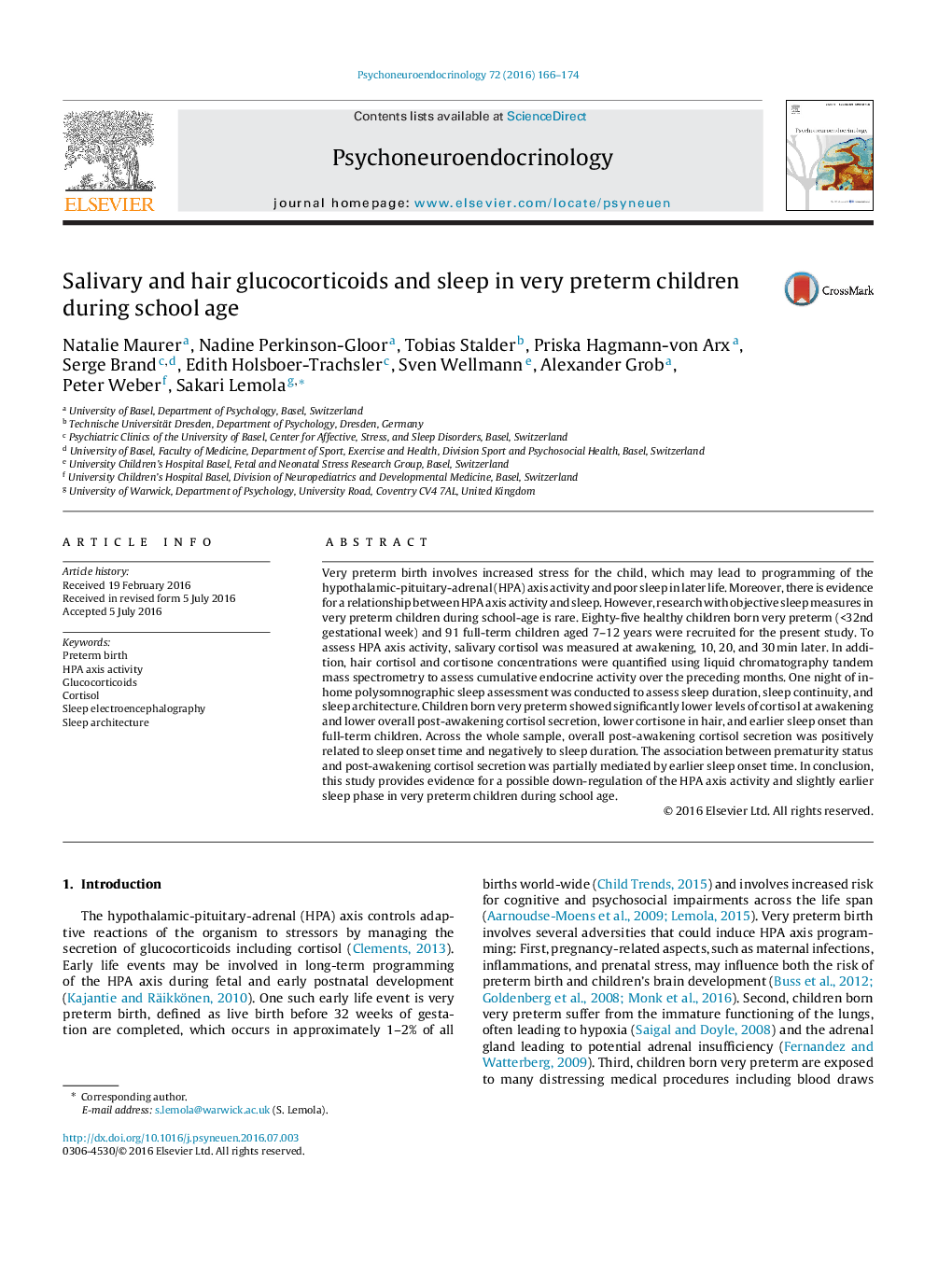| Article ID | Journal | Published Year | Pages | File Type |
|---|---|---|---|---|
| 6817952 | Psychoneuroendocrinology | 2016 | 9 Pages |
Abstract
Very preterm birth involves increased stress for the child, which may lead to programming of the hypothalamic-pituitary-adrenal (HPA) axis activity and poor sleep in later life. Moreover, there is evidence for a relationship between HPA axis activity and sleep. However, research with objective sleep measures in very preterm children during school-age is rare. Eighty-five healthy children born very preterm (<32nd gestational week) and 91 full-term children aged 7-12 years were recruited for the present study. To assess HPA axis activity, salivary cortisol was measured at awakening, 10, 20, and 30Â min later. In addition, hair cortisol and cortisone concentrations were quantified using liquid chromatography tandem mass spectrometry to assess cumulative endocrine activity over the preceding months. One night of in-home polysomnographic sleep assessment was conducted to assess sleep duration, sleep continuity, and sleep architecture. Children born very preterm showed significantly lower levels of cortisol at awakening and lower overall post-awakening cortisol secretion, lower cortisone in hair, and earlier sleep onset than full-term children. Across the whole sample, overall post-awakening cortisol secretion was positively related to sleep onset time and negatively to sleep duration. The association between prematurity status and post-awakening cortisol secretion was partially mediated by earlier sleep onset time. In conclusion, this study provides evidence for a possible down-regulation of the HPA axis activity and slightly earlier sleep phase in very preterm children during school age.
Keywords
Related Topics
Life Sciences
Biochemistry, Genetics and Molecular Biology
Endocrinology
Authors
Natalie Maurer, Nadine Perkinson-Gloor, Tobias Stalder, Priska Hagmann-von Arx, Serge Brand, Edith Holsboer-Trachsler, Sven Wellmann, Alexander Grob, Peter Weber, Sakari Lemola,
